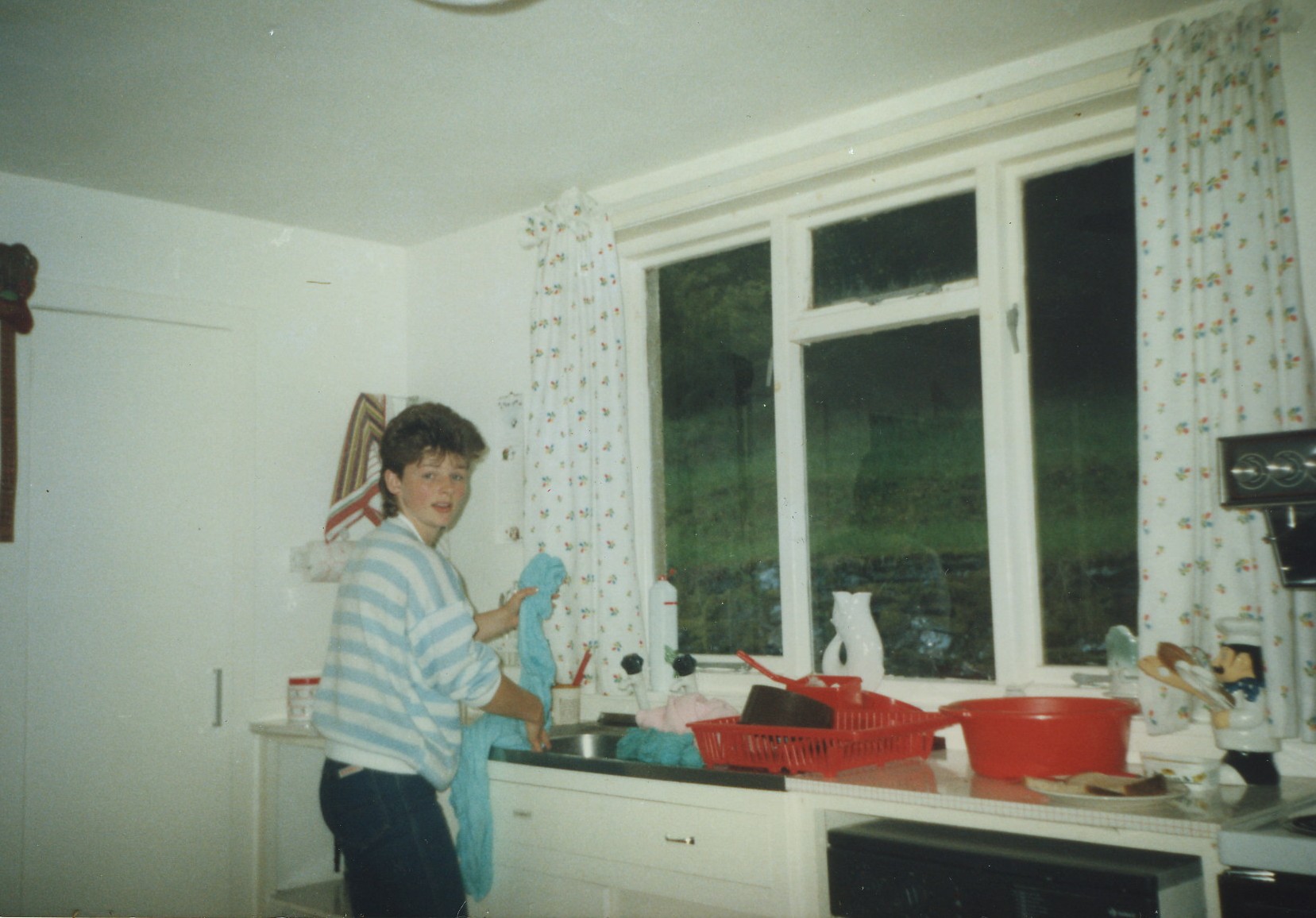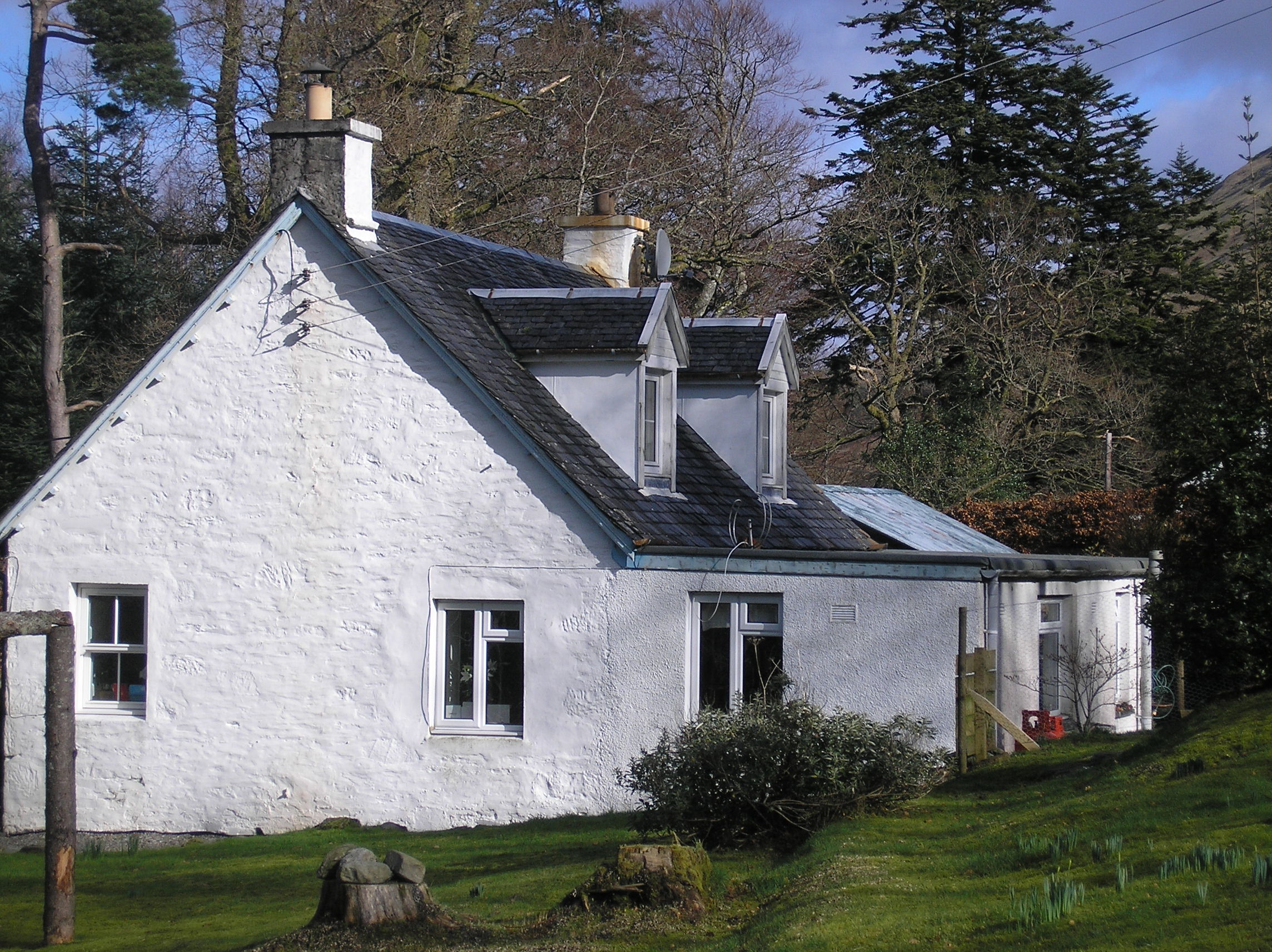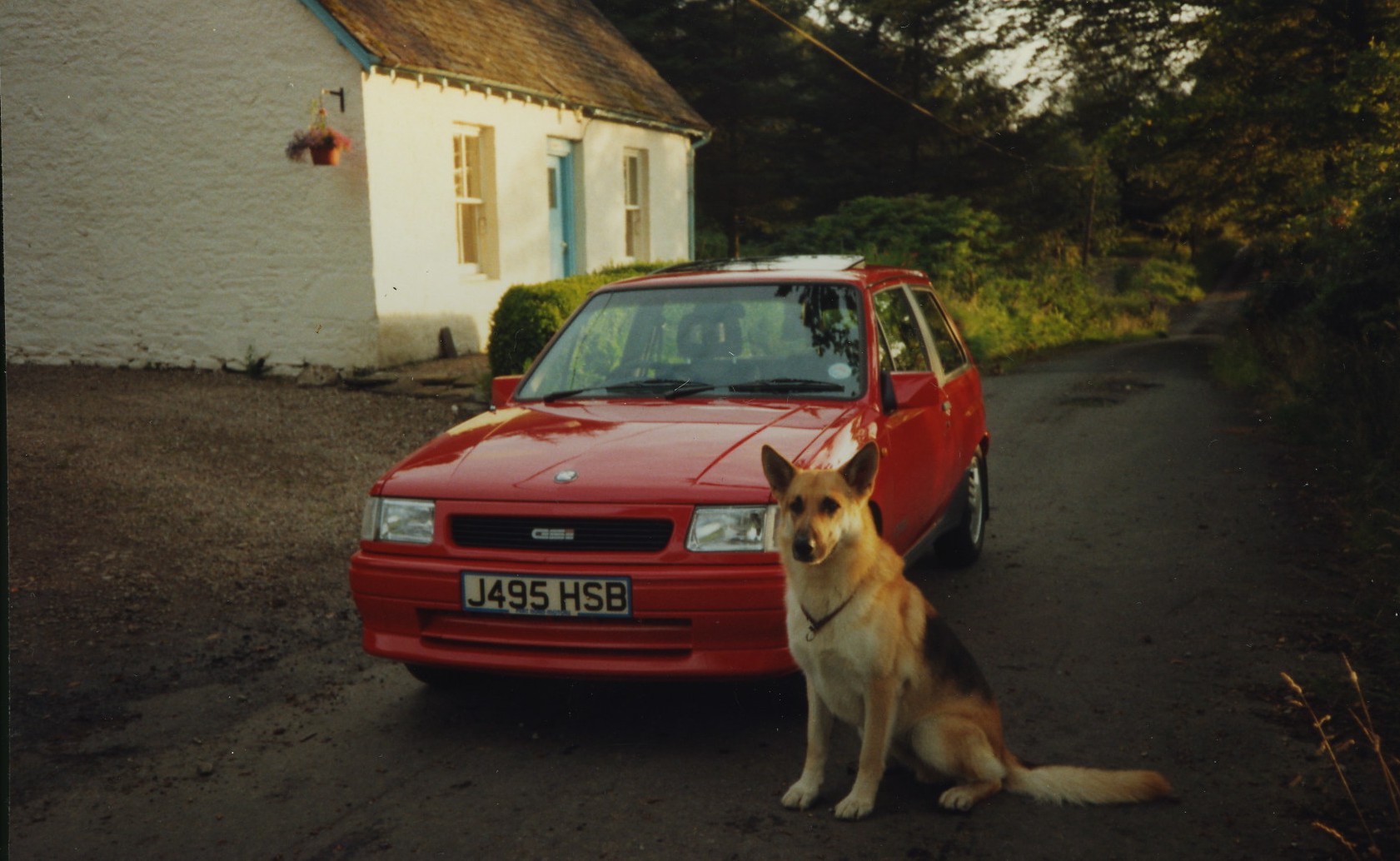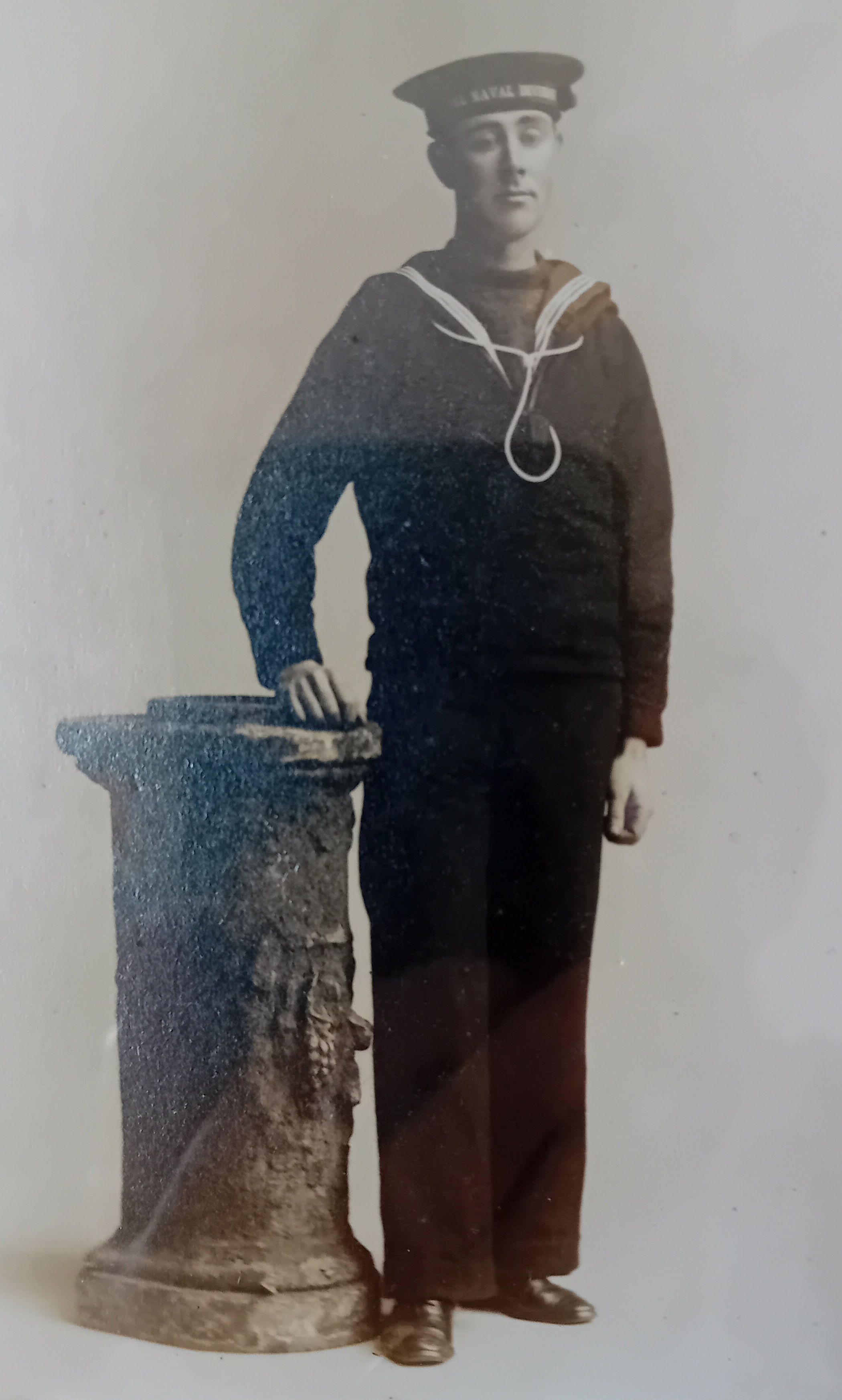Campbell`s Cottage | 64 occupants (1841 - 2006)
My husband Paul and I moved into Campbells Cottage in June 1986, after we got married. Paul came from Garelochhead, but we both worked at Rostad Salmon, the salmon farm, myself in the hatchery and Paul on the sea site so that was why we decided to stay in Cairndow. We rented the house from Strone Estate.
Campbells Cottage had been a holiday cottage since Archie Campbell, Flora McCuish and their family left it in 1977 ? That was when the houses name was changed from Croitachonie to Campbells Cottage.
Campbells Cottage had a back and front door, we never used the front door, we would go into the house from the back door on the side of the house, into a small passage, on the left was a bathroom, it had a bath, wash hand basin and toilet, a window looking out the back of the house, at the end of the passage was a large kitchen. This was a new extension that had been added to the house before it had become a holiday house. The kitchen had two large, shelved cupboards on the left hand wall as you went in the door, on the back wall was the sink in front of the window, some unit tops and a cooker, on the opposite wall from the door you are entering was another window. You went into the living room through a doorway (which was into the original house) opposite the back window, in the living room there was three windows, two on the left hand side of the house, on the gable end (the further back one being new), and a big one to the front of the house. The room had an open fire, it didn't have a back boiler to heat the water, it was made from small bricks and was painted in a horrible brown gloss paint, to the left of the fire was a small, two door cupboard, below the old window. Opposite the fire was a cupboard under the stairs, which was handy for storing kindlings and stuff for the fire.
On the right hand side of the front window, was a door into the front hall, the front door was on your left and the stairs was on your right, they were pretty steep stairs made of wood, straight in front of you from the front hall was a very cold bedroom, it had a large window on the front wall, a shelved cupboard and fireplace on the side wall which we never used, as the chimney was blocked, on the same wall was another window( which was new) we used this room in the summer.
Upstairs there was two small bedrooms with cum ceilings, and dorm windows, in the one to the left as you went up stairs, it had two cupboards one just as you went in the door, and one at the front of the bedroom, above the front hall. It was in there that we stored all our wedding presents, and the mice ate all our brand new towels and linen we had been given as presents, I was mad!! In the one to the right there was a small cupboard to the right of the window.
The cottage had no central heating, only the coal fire in the living room, we had a cylinder gas fire in the kitchen. In the winter we slept upstairs above the living room as it was warmer. All the windows were single glazed.
Our neighbours in Lower Croitachonie, opposite us, were Mr and Mrs Mickel, they had the house as a holiday cottage. Jane Dawson owned Croft Kennels (dog and cat kennels) which had previously been Top Croitachonie, Upper Croitachonie was a holiday cottage, we didn't know the people who owned it.
We lived a Campbells Cottage for seven years, and were very happy there, we did at one point try to buy the cottage, but at that time the estate was being split up so they changed their mind as they didn't know who was getting it.
We moved from Campbell's Cottage to Garden Cottage in 1992.
Dot Chalmers 2008
Campbell’s Cottage
i. General
This is Campbell's Cottage, which is the house of Samantha and Ian McPhee. The cottage is located on the rising ground some distance from the loch side on its south side. The principal elevation faces the loch which is now not visible because of a conifer plantation. The cottage lies on the south side of an estate road and its principal elevation faces on to the road to the north. The plot is bounded by what appears to be a drystone wall of rubble stone with coursed semi-circular copes. This is topped with a box hedge. An entrance within this wall leads up to the principal entrance of the cottage.
To the rear of the cottage to the south, the site is somewhat terraced into the hillside and there is a rubble-built retaining wall which appears relatively early, concrete paved within.
ii. External elevation
The cottage is again a very typical estate form, rather deep in plan and of three bay arrangement over 1.5 storeys under a double-pitched roof. The slating of Scots slates appears to have been re-slated comparatively recently, apparently in 1993. It appears that a lot of the slates are re-used or had been salvaged. As elsewhere, the principal elevation is of tri-partite form at the central entrance with small windows on either side. The door within the principal entrance is of 6-panel construction but is modern. The windows are sash-and-case of a two-over-two arrangement but pvc. The door is painted black, as is the eaves woodwork.
The cottage is rubble built throughout. The pointing has been repointed in cement, but it is likely that it had been flush pointed as elsewhere previously. There are some traces of the original finish. It looks like the building had been sneck-harled and was then limewashed over. The exterior is now painted white. The north front and the two gable walls are of rubble, painted over, with no harling.
The eaves are oversailing at the front and rear elevations and at the gable elevations as well, with the slating extending around the chimneys. The chimneys appear to be stone-built and mostly original with projecting thack stones on either side. These have been capped with a cast concrete cope.
There are paired windows in the west gable wall containing modern PVC windows within. In the east gable wall there is a further window offset to the south. It is clear that there has been some rebuilding around this and the window itself must be a relatively recent remodelling.
Along the rear side of the cottage is a much more modern extension. This is flat roofed with a felted top and the extension is cement-harled and painted white. This now contains PVC windows of which there is a single one at the west end and two along the south side. The western one of which is the kitchen window and it is considerably larger than the others. The entrance into the rear extension is at the north end of the east wall. The door into the rear extension is painted black and of three vertical panels below. The lower part arranged with three raised and fielded panels, is set vertically and above this is an oval glass opening.
Above the extension there are two dormer windows in the rear pitch of the main cottage. Between them is a small velux rooflight above the stair arrangement. The dormer windows have double pitched slated roofs and are otherwise of wooden construction with boarded sides. These both appear to be comparatively modern. The rear extension was apparently added in the early 1980s.
iii. Interior – Ground floor
The principal entrance in the main cottage gives access into a small entrance vestibule-cum-hall as is the standard plan for Cairndow. There is an entrance into the ground floor rooms to the east and the west and to the south a straight flight of stairs lead up to the upper level. This all relatively well preserved in arrangement although the door architraves appear to be secondary, mid-20th century, in date. These are detailed with slightly rounded arisses. The ceiling of this vestibule is of 3" tongue and groove V-section boards. There is some chipped paintwork, and plaster on the hard in the vestibule. On the wallward side to the north the flaking of the paint finish reveals some early paint schemes; the earliest of which appears to be a pink colour. This may be the original colour of the hall area.
The entrance to the west gives into the ground floor room. This is lit by a single window to the north and paired windows to the west, which sit on either side of a central fireplace. The fireplace itself is secondary, built of small bricks, presumably cemented with a raised hearth area, mantel shelf above. This is all painted black now. The window to the north now has 3" matchboarding V-section. lower down and plastered as elsewhere with an angle roll defining the window surround. The window to the north-west has a standard 19th century detail of a quirked angle roll and ogee outer moulding to the architrave. Below the window, there is a former cupboard door, now gone, with shelving within. The window to the south-west has a more recent plain surround. The understair area is formed into a cupboard but all of its framing is comparatively modern.
The eastern ground floor room has been more modified than the western one. The window in the north wall is detailed rather like the corresponding one in the west room with boarded lower area and angle roll at the corners. The lower boarding, however, is of 5" or 6" tongue-and-groove with a narrow bead at the joint. There had been an early fireplace in the east gable wall, which had been placed slightly offset to the north. The existing fireplace is entirely modern, consisting of a tall woodburner upon a semi-circular cemented plinth and the fireback is recessed. The window at the south end of the east wall is evidently a secondary insertion. The south wall itself is stripped back to masonry and pointed up in cement. This is the likely former position of the box beds as in other buildings of this type on the estate. At the south end of the west wall there is some apparent evidence for a slight recessing which would correspond to the box bed arrangement seen in other buildings. However, this area has now been broken through to the western room and so the ground floor is now fairly open plan with the exception of the small hall at the principal entrance in the stair area. This work of forming the open plan seems to have been done in about 2000.
An entrance in the south wall of the western room to the south-east leads into the existing rear extension. It seems likely that this entrance was pre-existing, before the addition of the extension. The larger western compartment of the rear extension contains the existing kitchen. This has units along the south side and to the south-east there are two small recesses/closets/pantries. The eastern part of the rear extension contains a narrow entrance passage, running from the external door in the eastern wall. In the south side of this passage is a second entrance leading into a bathroom with a bath to the west. The room also contains a ceramic sink and toilet. All of these interiors are simply appointed within, plasterboarded with plain architraves, slightly rounded corners and hardboard doors etc. No cornice work is present.
Dot Chalmers, who lived in this cottage from 1986 – 1992, saw the ground floor of the original building before these opening-up modifications for the open plan were undertaken. She recalls that the understair area had originally been accessed from the south. It was completely framed in whereas now it is simply accessed from the west with the reframing relating to the opening-up works. At that stage the eastern ground floor room was a bedroom and retained an early fireplace in the east gable wall (see above).
ii. Interior – First floor
The stairs rising to the second floor have double nosings that are very simply chamfered at the edges for a coarse rounding. The stairs terminate at a very small landing and on either side of this is a step up into the bedrooms. The bedrooms retain their original doors. These are plank-and-batten construction; the planks being tongue-and-grooved, about 8" detailed with a bead at the joint. The battens within have simple chamfered ends.
The eastern bedroom has a low ceiling with very pronounced coombing on either side. The collar beams are actually exposed, this evidently relatively recent. There are lath nail impressions on the undersides of these collars. Clearly, the frame was of very simple A-frame construction, built of sawn rectangular section; the pine is of comparatively high quality. If there had been a fireplace in this room within the gable wall to the east, there is no obvious evidence of it now. At the south-west corner of the room is a small filled-in area which may be a boiler cupboard. This has a plan-and-matchboarded door. The door to the western bedroom is also of tongue-and-groove plank-and-batten construction. The planks are plain without any beading at the joint. The door to the eastern bedroom has clearly been reset. There are hinge impressions on the stairward side now.
The western upstairs bedroom is very similar in detail to that previously described, again with the collar beams now exposed. There is also no immediate sign of the fireplace which seems to have likely existed in the west gable wall. Both bedrooms are lit by the existing dormer windows to the south. A small recess at the north-east corner in the western bedroom extends around the back of the rising.











